Family Busyconidae Higher classification Busycotypus | Superfamily Buccinoidea Genus Busycotypus Rank Species | |
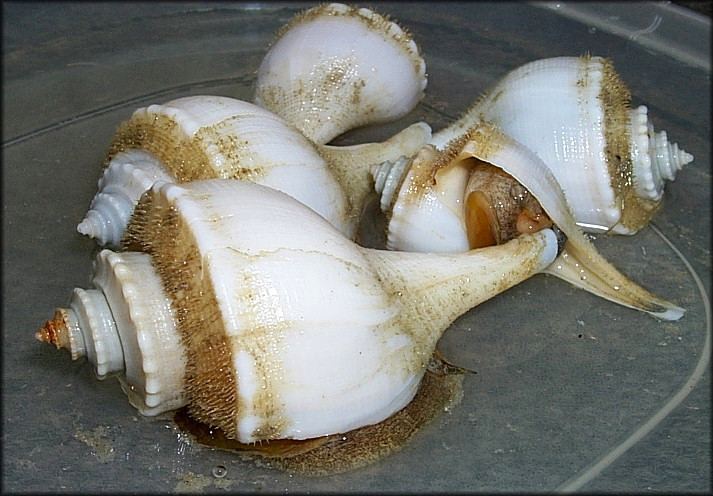 | ||
Similar Knobbed whelk, Busycon, Busycotypus, Sinistrofulgur perversum, Melongenidae | ||
Busycotypus canaliculatus linnaeus 1758 channeled whelk snail
The channeled whelk, Busycotypus canaliculatus, previously known as Busycon canaliculatum, is a very large predatory sea snail, a marine prosobranch gastropod, a busycon whelk, belonging to the family Busyconidae.
Contents
- Busycotypus canaliculatus linnaeus 1758 channeled whelk snail
- Distribution
- Shell description
- Human uses
- References
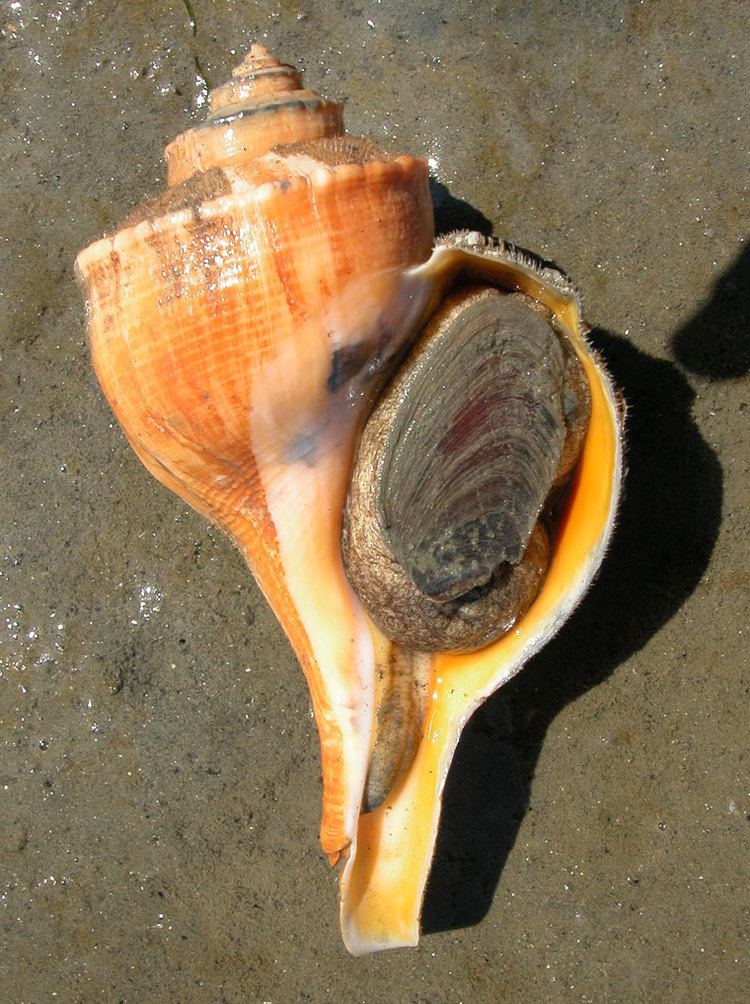
Busycotypus canaliculatus linnaeus 1758 channeled whelk snail
Distribution
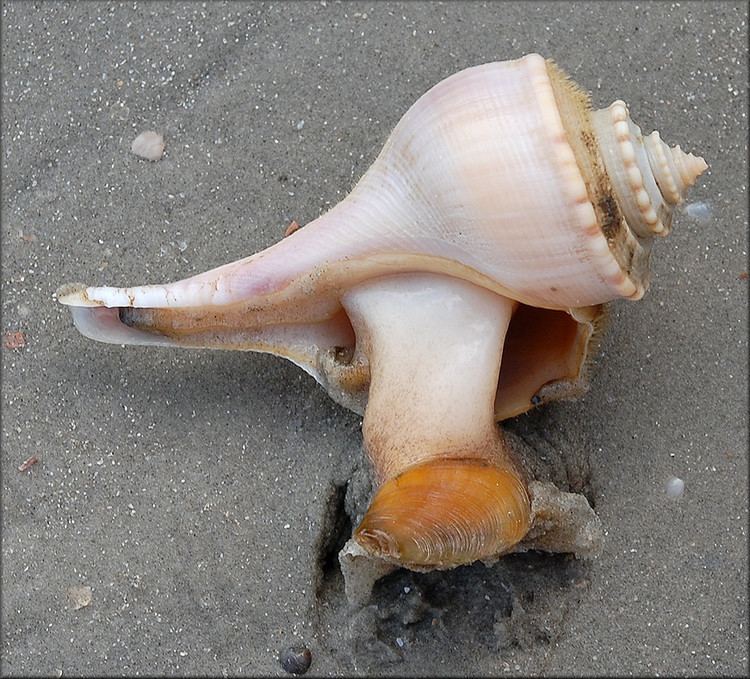
This species is endemic to the eastern coast of the United States, from Cape Cod, Massachusetts to northern Florida. It has also been introduced into San Francisco Bay.
Shell description
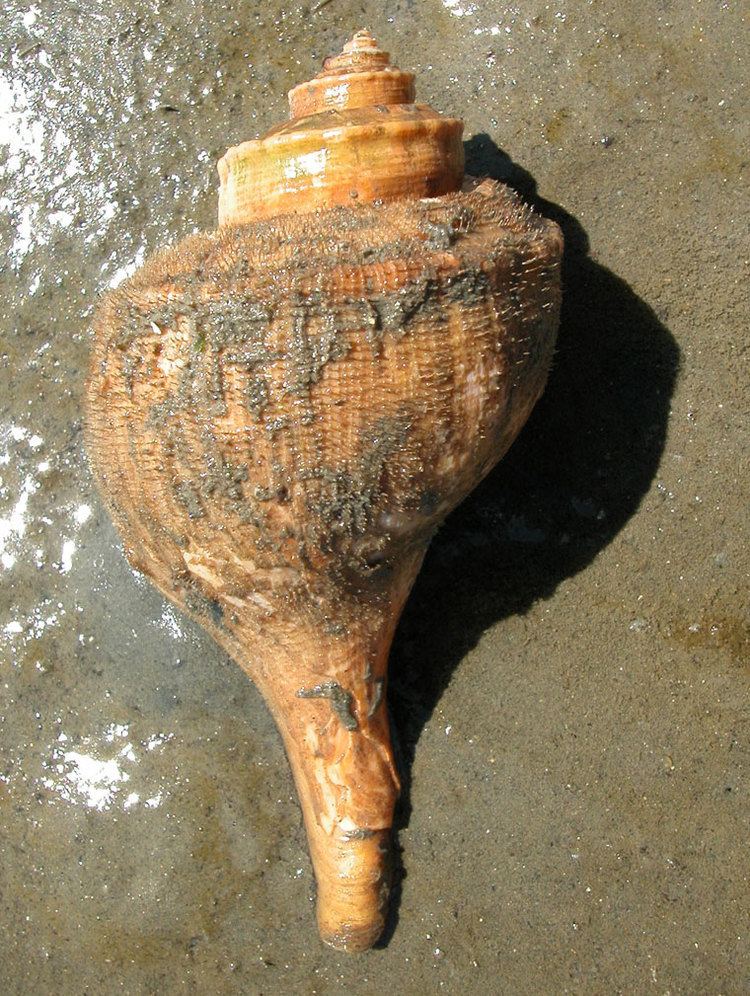
Shells of the channeled whelk typically reach 5 to 8 inches in length. The shell is smooth and subpyriform (generally pear-shaped), with a large body whorl and a straight siphonal canal. Between the whorls there is a wide, deep channel at the suture, and there are often weak knobs at the shoulders of the whorls. Finely sculpted lines begin at the siphonal canal and revolve around the shell surface.
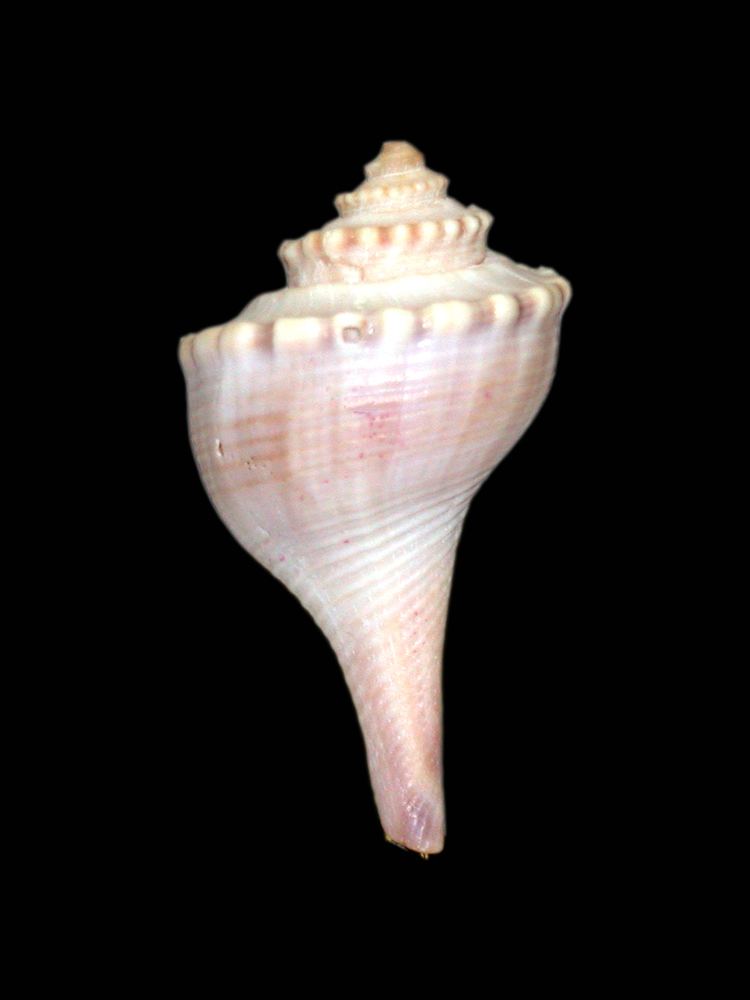
The color of the shell is typically a buff gray to light tan. The shell aperture is located on the right side, i.e. the shell of this species is almost always dextral in coiling. Left-handed or sinistral specimens occur rarely.

Channeled whelks prefer sandy, shallow, intertidal or subtidal areas, and can be common in these habitats. They tend to be nocturnal and are known to eat clams.
One of their predators is the blue crab Callinectes sapidus.
Human uses
This species is edible.
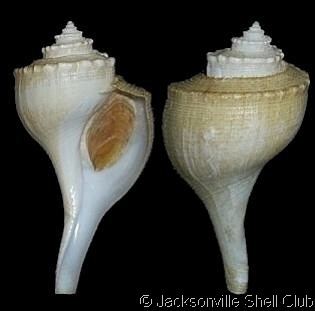
Historically, American Indians used the channeled whelk as a component in wampum, the shell beads exchanged in the North American fur trade.
